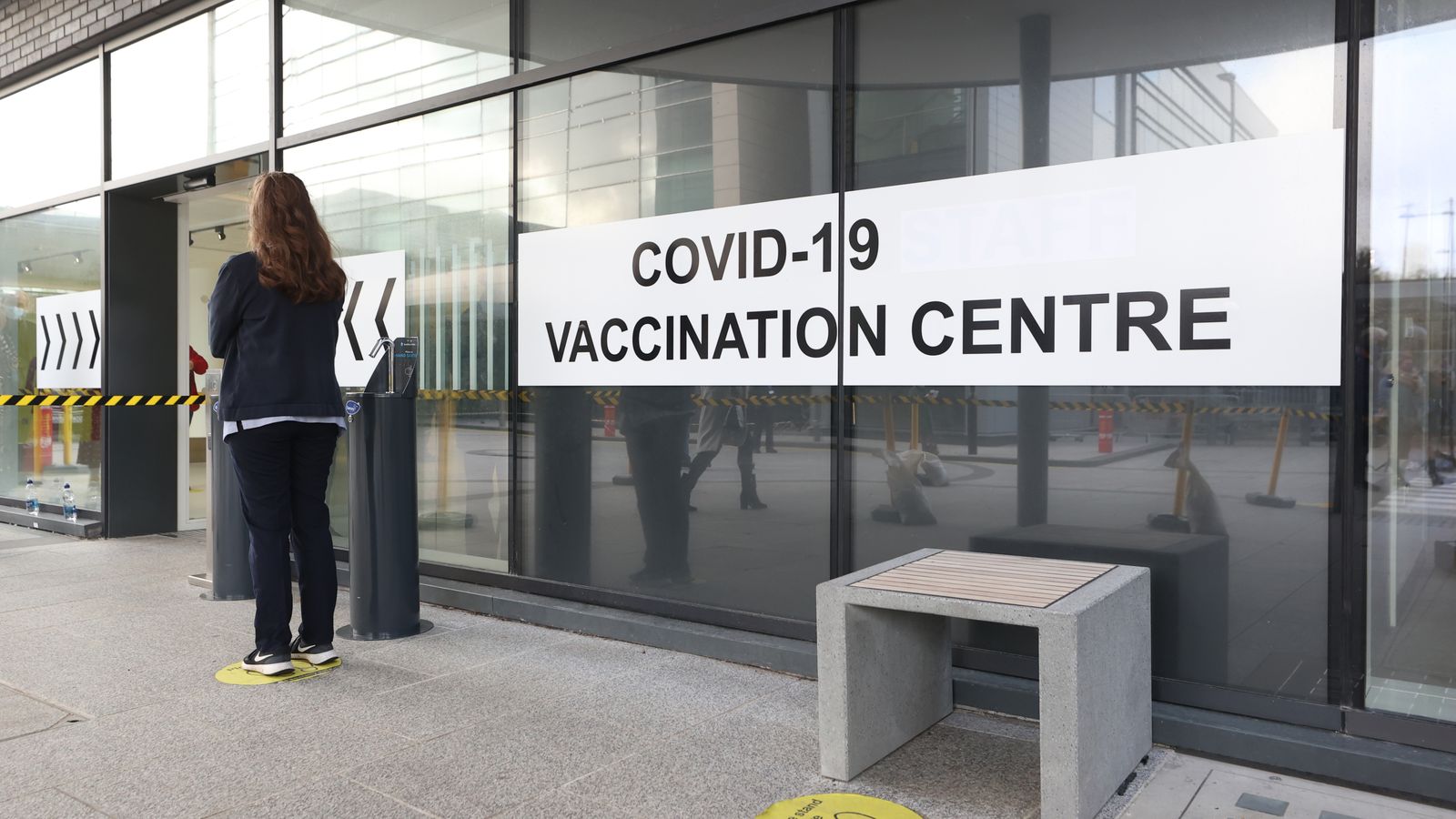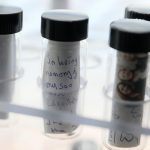A mix of coronavirus vaccines increases the chance of suffering side effects but comes with “no safety concerns”, a new study shows.
The research investigated using alternating doses of the Oxford/AstraZeneca and Pfizer COVID-19 jabs, with either being given as the first dose, and then the other as the second.
And it showed that a mix, increased the frequency of mild to moderate symptoms and led to more people taking time off work the day after inoculation.
However, adverse reactions were short-lived and there were no other safety concerns.
Live COVID updates from UK and around world
Researchers report that, when given at a four-week interval, both of the mixed schedules, Pfizer/BioNTech followed by Oxford/AstraZeneca, and Oxford/AstraZeneca followed by Pfizer/BioNTech, induced more frequent reactions following the second dose than the standard schedule of giving two of the same vaccine.
Reactions included symptoms like chills, fatigue, headaches and feeling feverish, and were short-lived, according to a peer-reviewed letter that has been printed in The Lancet.
And, the research suggests that as the study data was recorded in participants aged 50 and above, there is a possibility such reactions may be more prevalent in younger age groups.
The study reported reactogenicity findings only – how people feel after the vaccine – and not yet the immunogenicity findings, that is how well the mixed dosing worked at inducing an immune response.
Matthew Snape, associate professor in paediatrics and vaccinology at the University of Oxford, and chief investigator on the trial, said: “Whilst this is a secondary part of what we are trying to explore through these studies, it is important that we inform people about these data, especially as these mixed-doses schedules are being considered in several countries.
“The results from this study suggest mixed dose schedules could result in an increase in work absences the day after immunisation, and this is important to consider when planning immunisation of healthcare workers.
“Importantly, there are no safety concerns or signals, and this does not tell us if the immune response will be affected.
“We hope to report these data in the coming months.
“In the meantime, we have adapted the ongoing study to assess whether early and regular use of paracetamol reduces the frequency of these reactions.”
Prof Snape added the number of symptoms did not vary too much depending on which vaccine was given first.
He said: “They’re very very similar actually when you look at them.
“It slightly differs according to whether it was chills or fatigue that you’re looking at, but actually they were remarkably similar across the board.”






















